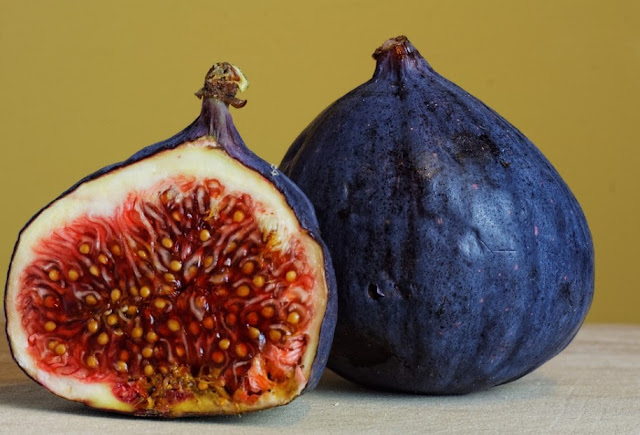 |
| How to eat fig, |
How to eat fig? all about fig and its benefits
How to eat a fig. Just don't be cowardly in front of fresh figs - even those who have never eaten them can brave it because their preparation and preparation is very simple. Apart from that, they taste great and have only other advantages. Nowadays fig have more anty bodies against coronavirus.it has a good defense.
All about fig and its benefits
fresh figs
can help to meet the daily need for vitamin E: a good 4 percent of them contain
100 grams of pulp and thus support the body in the defense against
cell-damaging substances such as free radicals.
With an
emission value of fewer than 130 grams per 100 grams, the CO2 balance of Feigns
is good. The CO2 values are based on the calculations of the IFEU Institute
for Energy and Environmental Research
Heidelberg
and were individually accounted for as “average food” for each food as sold in
Germany. They take the production location, the production
all
associated transports, processing, packaging, and storage into
account. The
emissions of all greenhouse gases such as B. Carbon dioxide
(CO2),
methane (CH4) and nitrous oxide (N2O) were taken into account and converted
into CO2 equivalents. Simplified, however, is only referred to as CO2.
... are good
for the bones: Admittedly - 54 milligrams of calcium per 100 grams of figs are
not the world, but still cover 5.4 percent of the daily
requirement
for this bone-strengthening mineral. A great addition to this is the rather
abundant vitamin K prevents bone loss.
... contain
a lot of iron: women and veggies, in particular, should snack on figs more often!
They contain almost 5 percent of the daily requirement per 100 grams and thus
support blood formation.
... provide
the mineral potassium: 100 grams of figs contain 250 milligrams of potassium.
This mineral lowers blood pressure, is important for the
nerves and
has an important role in metabolism. A lack of potassium can lead to
cardiac activity and electrolyte imbalance.
...
strengthen the immune system: Figs are definitely a good choice for the immune
system: They supply significant amounts of zinc, which promotes
the immune
system and also ensures healthy skin, beautiful hair and well-functioning cell
division.
... offer B
vitamins: Even if they are relatively small amounts - fresh figs contain up to
5.5 percent of the daily requirement for all-important vitamins in the B group.
... promote
digestion: figs are not particularly rich in fiber. Nevertheless, you can gently
push a lazy intestine with it, because fresh figs can also eat the soft skin,
which offers more indigestible fibers than the pulp. However, important: rinse
well before eating!
You should
know that about figs
Dried figs,
especially in autumn and winter, have been in business here for a few decades.
Fresh figs, on the other hand, were hardly known in Germany until about 15
years ago - they were considered extremely exotic. This has changed not least
due to the growing number of Turkish vegetable and fruit dealers because they
naturally offer fresh figs alongside apples and oranges. Anyone who has
accessed it once will do so again because especially figs from Turkey have a
first-class reputation as, particularly delicious fruits.
From a
botanical point of view, figs are actually false fruits. The actual fruits are
the numerous soft yellow kernels that are hidden in the juicy pink to a red pulp.
You can
not only eat them, but they also have a lot of valuable ingredients to
offer.
Since fig
trees grow up to three times a year, the harvest is correspondingly abundant
and so that it does not deteriorate, a large part of the fresh figs are dried
in the sun or in
special ovens. They do not necessarily become more beautiful,
but they are extremely
rich and sweet: When dried, the figs get a flat shape
and brown color, the fruit juice,
and fructose contained crystallize and make
the figs particularly durable.
origin
The original
home of the fig trees is the Orient. In the meantime, however, they have been
growing in most other warm countries in the Middle East and around The Mediterranean as well as in California and Australia.
season
Fresh figs
come from the Mediterranean countries from July to November. Then they are
flown in from California, Australia, and Brazil. You can buy dried figs all year
round.
Taste
Fresh figs
have a slightly sweet, very mild taste. Dried figs taste very sweet.

Thank,s for visiting our page.
EmoticonEmoticon